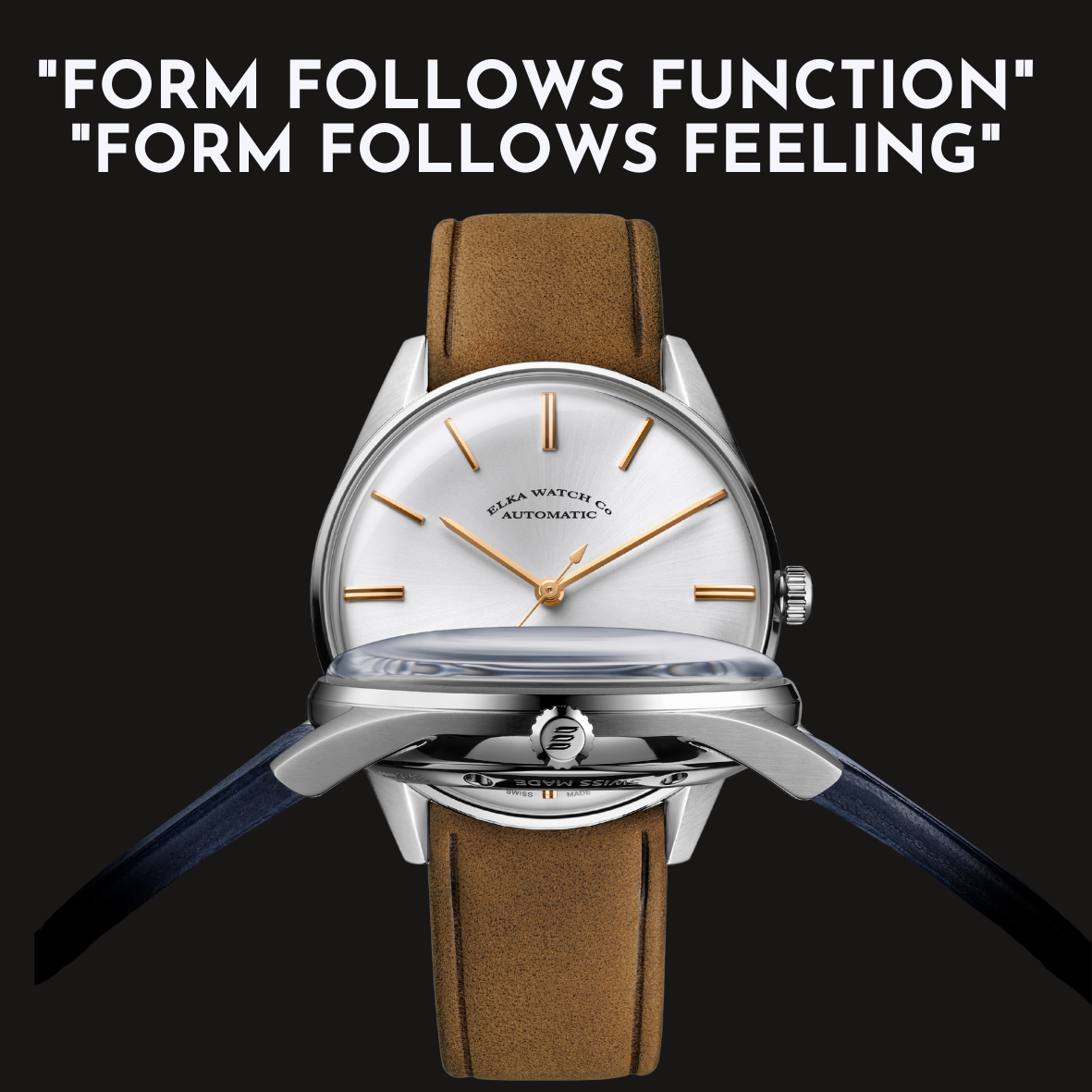"Form Follows Function" vs. "Form Follows Feeling"

In the world of design, every line, every curve, and every choice of material tells a story. But what is the true purpose of an object? Should it be purely efficient, or should it primarily move us emotionally? Today, while the time is instantly available on our phones, a watch is no longer primarily a simple time-measuring tool. It has become a jewel, an emotional object, and an extension of our personality. It is in this context that contemporary watchmaking is witnessing a fascinating dialogue between two concepts: the famous maxim of the Bauhaus movement, "Form Follows Function," and its modern extension, "Form Follows Feeling," which is the motto (or claim) of the Swiss brand Elka Watch Co., founded by Hakim El Kadiri.
1. "Form Follows Function": The Bauhaus Legacy This principle is the cornerstone of modern architecture and design. Popularized at the beginning of the 20th century by the Bauhaus movement—with iconic figures such as Walter Gropius and Ludwig Mies van der Rohe—it serves as a manifesto against unnecessary ornamentation. The philosophy behind this approach is clear: the object's purpose must dictate its design and appearance. Aesthetics are subordinated to utility. The objective is to achieve clarity, functionality, efficiency, and the possibility of mass production without frills. The aesthetic result translates into clean lines, geometric shapes, and a complete absence of superfluous decoration. Beauty is found in the simplicity and truth of the structure. The perfect watchmaking example is an extremely legible watch dial, where every element (indices, hands) serves only to indicate the time with precision. However, this principle can lead to designs perceived as too cold, impersonal, or rigid, ignoring the psychological aspect of the user. Essentially, for the Bauhaus, a watch is beautiful only because every part is perfectly suited to its task of telling the time.
2. "Form Follows Feeling": The Elka Watch Co. Motto This concept is an extension and a response to the limits of the purely functional approach, acknowledging the current emotional role of the watch. Proposed by Hakim El Kadiri (Founder of Elka Watch Co.), he seeks to reintroduce the human element and emotion into the creative process, making it the very motto of the brand. According to this motto, the object's form must be guided by the emotional experience and the connection the user establishes with it. The objective is no longer solely efficiency, but also to create comfort, warmth, and a personal connection. The object must be pleasant to handle and look at over the long term. The aesthetic result is manifested by softer lines, rounded contours, and organic or "pebble-like" shapes, aiming to create a feeling of familiarity and well-being. This is seen, for example, in the use of rounded and polished cases (like those of the Elka N-Series) which recall the comfort of historical pocket watches and invite the user to touch them. This concept does not reject functionality but posits that the ultimate function of design includes the feeling it provides. It is design that responds to both a technical and an emotional need.
The Watchmaking Dialogue: Efficiency vs. Emotion These two philosophies are not necessarily at war, but rather in dialogue.
- Bauhaus gave us watches of unparalleled clarity—precise tools.
- "Form Follows Feeling," the motto of Elka Watch Co., reminds us that even an instrument as precise as a watch must primarily bring us pleasure. It humanizes the technology by adding a layer of emotional intent essential for the object we wear on our wrist.
For brands like Elka Watch Co., integrating both principles allows them to create technically reliable watches (function) while utilizing soft shapes and historical references to create an immediate emotional bond (feeling).
And you, which philosophy guides your watch choices? Do you prefer the pure efficiency of the Bauhaus, or the emotional appeal of a watch designed for feeling? Share your opinion in the comments!